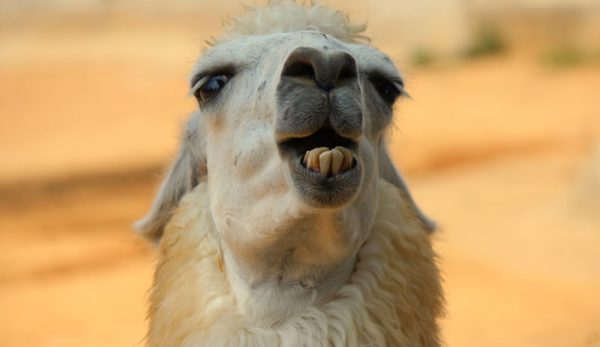
Welcome to a two-part series where we take a look at the teeth inside your animals’ mouths. This month, we’ll explore normal (and different) anatomy you will find in various species. Next month we’ll tackle some common abnormal dental issues.
Horses
Horses are similar to us in that they have two sets of teeth: a baby set (called deciduous or milk teeth) and an adult set. Adult teeth in horses come in gradually and a horse usually has all his adult teeth by the age of five. This does, however, vary by individual and, interestingly, sometimes by breed.
Horses have 24 baby teeth, which then are replaced by 36 to 40 in the adult set.
Many horses will have an extra premolar at the start of the line. This is called a wolf tooth and is considered a vestigial premolar. It is usually very small and serves no purpose. In some cases it interferes with the bit and can cause pain when the horse wears a bridle.
For this reason, wolf teeth are often removed.
Ruminants
Cattle, sheep, goats, llamas and alpacas have a major difference in their dentition as compared to horses. These species do not have incisors on the top, only on the bottom. Instead, on the top they have what is called a dental pad, which is a thick, hard gum line where the animal can pinch blades of grass, nipping the forage off with the bottom incisors.
All farm species still have top and bottom molars for grinding in the back of the mouth.
Read more: Learn more about your goats’ dental needs!
Cattle
Calves have a set of 20 deciduous (baby) teeth, all of which come in by the age of two weeks. Then, starting at about a year of age, the permanent adult teeth start erupting.
Over the bovine’s next few years, a total of 32 adult teeth will emerge. The outer incisors take the longest to erupt, between 36 and 48 months of age. This provides an estimator of age for animals under 4 years.
All told, an adult cow, bull or steer will have six incisors along the bottom front of the jaw, one canine on each side following the outer incisor, then three premolars and three molars in each cheek quadrant.
Sheep/Goats
Like cattle, sheep and goats have 20 deciduous teeth and 32 adult teeth, all in the same places as their larger bovine counterparts. As ruminants and small ruminants age, their incisors begin to space apart and become worn, creating gaps between the teeth.
At ages beyond five years, incisors begin to fall out occasionally and the animal has what is referred to as a “broken mouth.” That’s a slightly harsh term, though, as they can do just fine with a few missing front teeth.
Read more: Sheep can help with weed control on a small farm.
Camelids
Alpaca and llama dental care is very different from both horses and ruminants. While camelids have an upper dental pad instead of top incisors (just like ruminants), their lower incisors continually grow longer throughout the animal’s life. They can sometimes protrude beyond the upper lips and interfere with grazing.
For this reason, many camelids need their lower incisors trimmed. A veterinarian usually does this easily with a drill. Just shaving the tops off the incisors is usually all that’s needed on a yearly basis.
Male camelids also have canine teeth. These are often referred to as “fighting teeth” and for very good reason. Males use them for fighting other males in the herd to establish dominance. These fighting teeth are razor sharp, and males can inflict serious damage on each other.
For safety reasons, we often remove the fighting teeth in males (see video below). Females can have them too, but they often barely break the gum surface and are very small—nowhere near the daggers of the males. Removal of fighting teeth is fairly simple, often involving only a wire to saw through the tooth at the gum line.

Most males don’t get their fighting teeth until they reach 2 to 3 years of age. Some late bloomers may get them at 6 or 7 years. And the real kicker? There are two canines on each side of the upper jaw, one on each side of the lower jaw.
That’s a total of six fighting teeth. Sometimes it’s like opening a shark’s mouth!
Next month, let’s take a peek at some of the things that can go wrong in a farm animal’s mouth.




